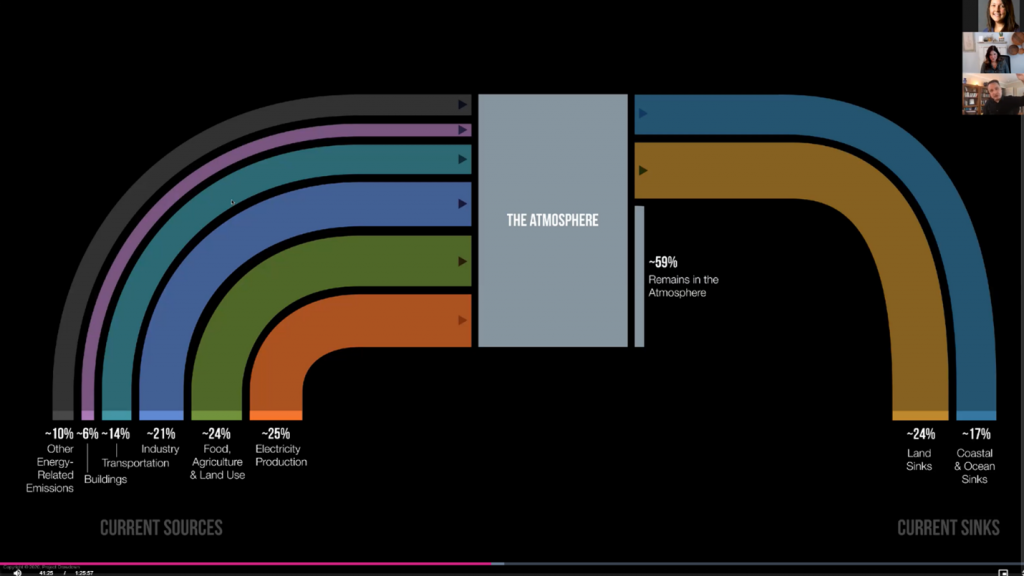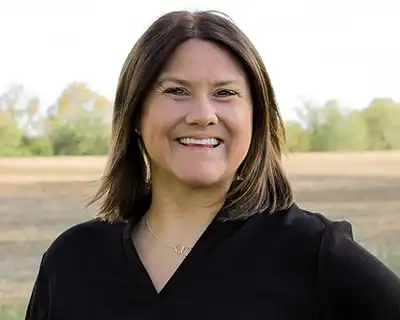During Day 1 of our 2021 Trust In Food Symposium: Regenerative Reset event held in February, Trust In Food posed the question, “How much can farming address climate change?” In this 90-minute session, moderated by Trust In Food’s Executive Vice President Amy Skoczlas Cole, we heard from Dr. Jonathan Foley of Project Drawdown on the role solutions-based agriculture can play in addressing climate change.
Dr. Foley begins the conversation by talking about the intersection of climate and ag—focusing not on who is to blame but rather on win-win solutions for transforming farming and the food system together.
In the past 50 years, we have seen a lot of change in the U.S., including the move to a predominately urban-dwelling population and unprecedented economic growth. This has come with unprecedented consumption of natural resources. Naturally, this has resulted in systems-wide changes to how goods are produced.
Agricultural production accounts for 35% to 40% of the world’s land conversion. Because agriculture is tasked with feeding 9 billion people by 2050, the industry is at the forefront of the need for system-wide adaptive solutions that ensure the ag sector, and the natural resources and ecosystems it relies on, remains viable for generations into the future.

| Image 1. The atmospheric cycle as visualized in Dr. Foley’s presentation. Copyright: Project Drawdown |
Dr. Foley uses this graph to visualize the global atmospheric cycle related to greenhouse gas emissions including carbon dioxide, methane and nitrous oxide sources and sinks. Agriculture can have a positive impact on both sides of the cycle by reducing the flow of the pollution sources (illustrated by the green arrow on the left side, which shows that about 24% of emissions come from food, ag and land use) and enhancing the role of land sinks (illustrated by the brown arrow on the right side) by farming and managing land a bit differently.
Although many climate solutions propose end-use solutions that focus on managing of pollution or waste after it has been produced, a better first step would be to address sources of pollution and waste. This would reduce the need to task the environment with absorbing the effects of pollution via land, coasts and oceans.
How can ag can play a role in this process, providing climate solutions? Dr. Foley breaks down levers producers and others in agriculture can pull to help reduce sources of pollution and waste. These include:
- Protecting ecosystems
- Forest protection
- Indigenous peoples forest tenure
- Grassland protection
- Coastal wetland protection
- Peatland protection and rewetting
- Shifting agriculture to more regenerative practices
- Regenerative annual cropping
- Conservation agriculture
- Improved rice production
- More efficient nutrient management
- Improving farm irrigation efficiency
- Sustainable intensification for smallholders
In addition to reducing pollution and waste sources, Dr. Foley says, agriculture can support and enhance our land-based carbon sinks:
- Manage ag lands so they act as a “carbon sponge”:
- Managed grazing
- Perennial staple crops
- Silvopasture
- Tree intercropping
- Conservation ag
- Multi-strata agroforestry
- Regenerative perennial cropping
- Protect and restore ecosystems
- Tropical reforestation efforts
- Temperate reforestation efforts
- Grassland protection
- Forest protection
- Indigenous peoples forest tenure
- Peatland protection and rewetting
- Use degraded land
- Tree plantations on degraded lands
- Abandoned farmland restoration
- Bamboo production
Although regenerative ag provides many benefits such as healthier soils, more organic matter, more resilient farm systems, less erosion and nutrient runoff, and improved habitats, it is not a silver-bullet climate solution. We still need to reduce the sources of emissions in tandem with protecting and enhancing carbon sinks.



